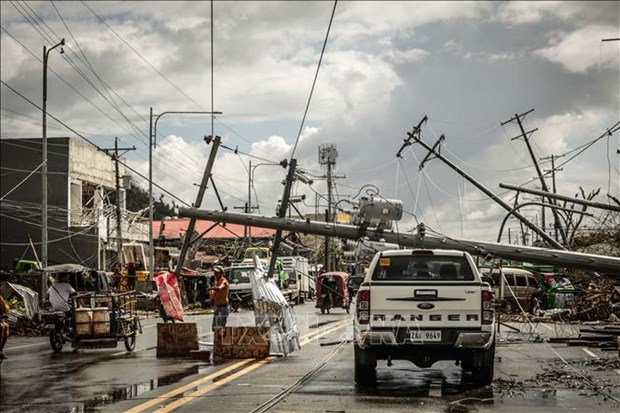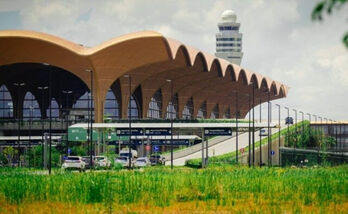
Fallen electric pylons block a road while a sign asking for food (L), is displayed along a road in Surigao City, the Philippines. (Photo: AFP/VNA)
Three weeks after Typhoon Rai struck southern and central islands, destroying thousands of homes and killing more than 400 people, relief work continues to deliver supplies to affected residents.
At least nine people have died from diarrhoea in the islands of Dinagat and Siargao, the Philippine health department's regional office said. A total of 895 cases had been recorded there since the typhoon struck, mostly among those left homeless, said department spokesman Ernesto Pareja, adding that the government and aid agencies rushed to build emergency water treatment facilities
The International Federation of Red Cross and Red Crescent Societies warned of a "mounting health crisis" in typhoon-hit areas as it scaled up its disaster response. The typhoon left millions without access to clean drinking water, hospitals and health facilities, IFRC Philippine delegation head Alberto Bocanegra said.
The United Nations World Food Programme, meanwhile, voiced concern over a rapid rise in preventable malnutrition if affected families are not provided with badly needed food assistance.
A total of 402 people have died from the typhoon which struck the country on December 16 last year, according to the Philippine civil defence office's latest tally, with more than 1,200 injured and 78 still missing and at least 370,000 still in evacuation centres.
Survivors have likened the storm to Super Typhoon Haiyan, which left 7,300 people dead or missing across the central Philippines in 2013 and remains the country's deadliest on record./.
VNA
 Cambodia officially inaugurates Techo International Airport
Cambodia officially inaugurates Techo International Airport



